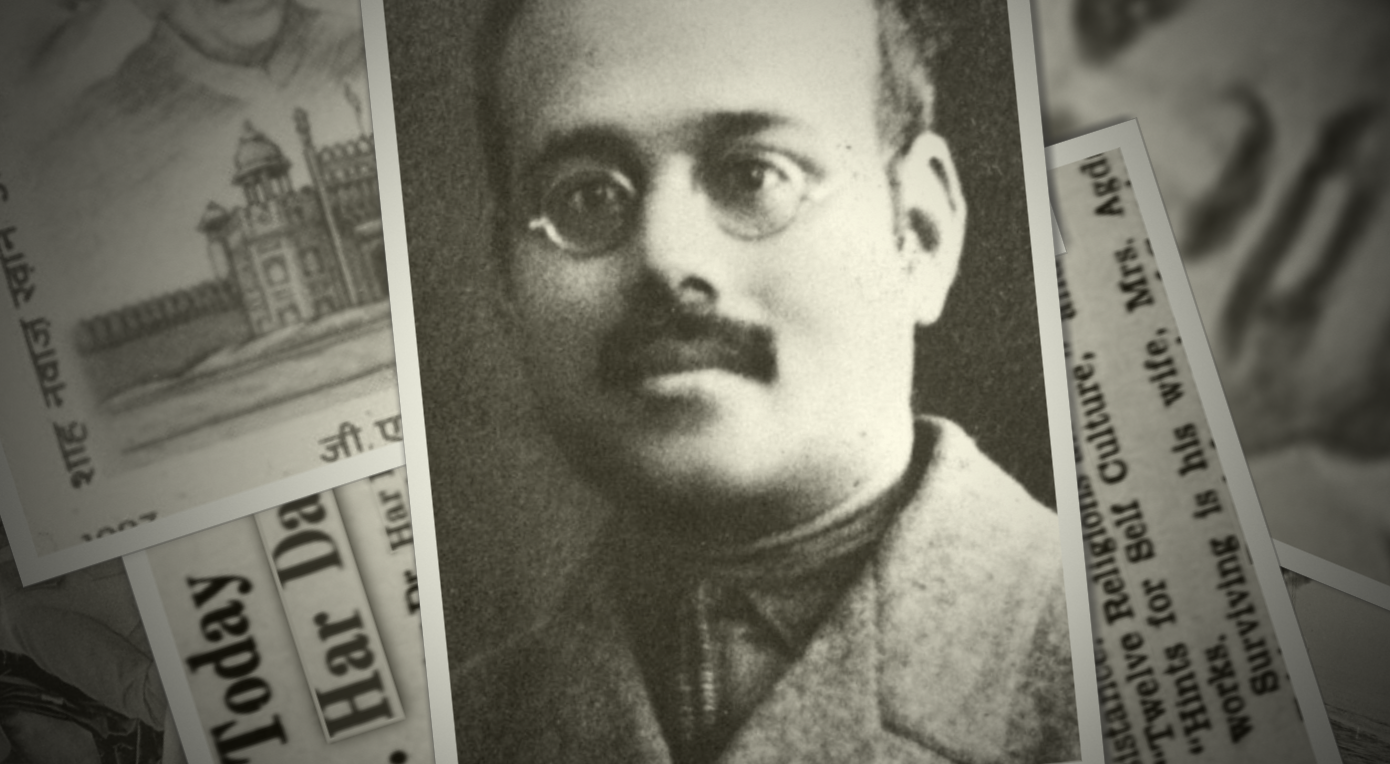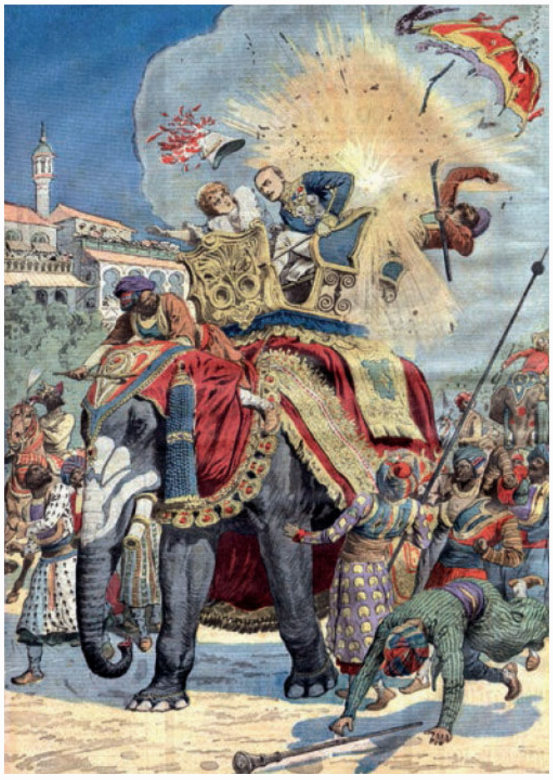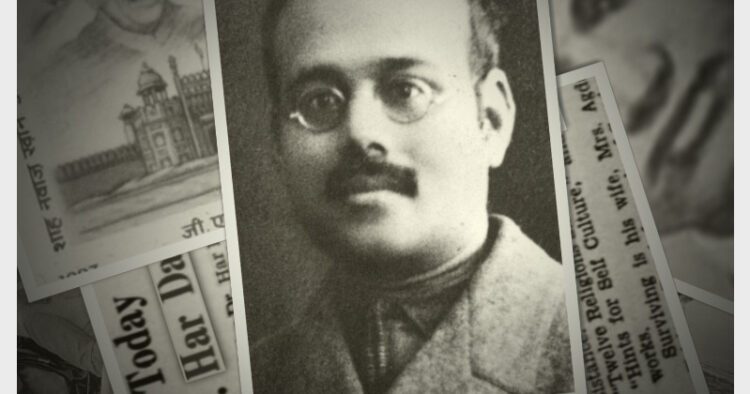
Lala Har Dayal passed away in his sleep on the cold winter night of 4 March 1939 in distant Philadelphia in America. He was just 54. Three days later his obituary appeared in The New York Times.
Har Dayal (18 November 1884 – 4 March 1939), also known as Dr. Har Dayal, is not a popular name that everyone instantly recalled. His patriotic endeavours, amazing triumphs, and fascinating life are not part of popular history. His writings and books have not been in circulation in India or overseas for years. I first heard his name just in passing two decades ago. Much later my curiosity about the Indian National Army took me to the logical beginning of the story in 1857. The first war of India’s independence has been extensively explored and written about. Following up on that, I found myself in the uncharted territory of the Ghadr Party movement in California and repeated references to its originator, Har Dayal.
Har Dayal was no ordinary man. One of the most brilliant scholars to attend and depart from Oxford (1905-07), he had immersed himself in academics more extravagantly, and grandiosely, than anyone before him at the university. Har Dayal’s memory was superhuman; he systematically stockpiled in the vaults of his head, not just huge slices of unabridged literature but whole libraries, chapter by chapter, word for word. An exceptional polymath, this Sanskrit graduate from St Stephen’s College of Delhi could teach in seventeen different languages from Arabic, Greek, and Pali to French, Swedish, and Urdu. From all accounts, he was a smarter and better-read person than anyone else who lived in his era and his extensive writings and life’s work stands proof of that gift. Even his detractors and severest critics including The New York Times had to recognize the colossal power of his mind and praised him in 1919 as “not only the brainiest man… but also the most cultured”. This extraordinary individual became among many things the first Indian to teach at an American university (Stanford 1912) and later in life the foremost global authority on Buddhism. Lala Lajpat Rai, noted, “He (Har Dayal) is an idealist of a strange type. He is simple in his life and apparently quite indifferent to the opinions of others about him. He does not court favour at the hands of anyone and would go out of his way to help others. He is loved and respected by hundreds and thousands of his countrymen, including those who do not agree with his views or his propaganda or his program. Even the late Mr. Gokhale admired him.”
Har Dayal’s sprawling resume also included his role as a determined revolutionary leader who demanded India’s freedom even before World War I. In the pre-Gandhi era, he instigated Indians towards non-violent civil disobedience as well as ferocious attacks on the British Empire. Inspiring the youth of India with his selfless leadership, Har Dayal wrote “Great man of the past – they despised money and property. You can do the same they sacrificed everything for the good of their fellow men. You can do the same. They cultivated extreme simplicity in food, drink and dress, you can do the same, they loved and served the poor and the humble, you can do the same. They were free from lust and craving, you can be the same, they were always patient and gentle, you can be the same, they inspired their friends and comrades with zeal for perfection, you can do the same”.
The archives of Britain, America, Canada, Germany, Sweden, and India reveal that Har Dayal was an extraordinarily brilliant, highly cultured, and extremely dangerous Indian revolutionary who Hukumat-i-Britannia, the greatest empire on Earth, feared like no one else. At one stage the audacious rebel even proposed an invasion of Britain by a revolutionary army of Indians and intended to introduce Sanskrit among its natives to accomplish reverse colonization. This dazzling man from Delhi became the significant protagonist in the Oxford debates, the India House in London, the attack on Viceroy Hardinge in Delhi, the mission to form the first provisional government of Free India in Kabul, the Komagata Maru saga in Vancouver, the Indo-German trial in San Francisco, the Lahore Conspiracy trials in India, and the Singapore Mutiny of 1915. Over a hundred years ago, Har Dayal as the architect of the non-sectarian Ghadr Party stirred an entire generation of Indian youth from women revolutionaries like Gulab Kaur to the heroic Kartar Singh Sarabha and Udham Singh. Har Dayal’s comradeships stretched from Shyamji Krishna Varma, Vinayak Savarkar, Bhikaji Cama, Rev Charles Andrews, and Bhai Pramanand to Sohan Singh Bhakna, Maulvi Barkatullah, and Rash Behari Bose. In his prison notes during his incarceration in Cellular Jail, Savarkar wrote, “I had the honor of knowing him as my very intimate friend… Har Dayal was my friend and I was prepared to suffer any punishment for saying so. The, political prisoners ought to learn this, If they did not learn anything else. That was the only way to show our gratitude to Har Dayal…”
The timeworn records locked away in the archives reveal the covert role of Har Dayal in initiating Americans and Germans into India’s independence movement. The mighty British Empire despite all its influence and secret agents was powerless to arrest the tsunami of nationalism unleashed by the brilliant Har Dayal. The rebellious ‘Ghadr ki Goonj’ had become a worldwide phenomenon. Incensed, draconian laws like the Rowlatt Act were legislated to ban him and the Ghadr Party in India. Nonetheless in exile for over thirty years Har Dayal emerged as Ghadr exemplified. He singlehandedly battled the largest, richest, and the most powerful military empire the world had ever known. His mission remained India’s liberation from colonial rule and his weapon of choice was his formidable intellect. His profound thoughts and ideas won appreciation from the leading American and European intellectuals for his writings reflected all the three attributes of high literature: originality, cognitive power, and aesthetic splendor. Har Dayal’s legacy is visible even now and Professor Mark Juergensmeyer, Professor of Global and International Studies at the University of California, Santa Barbara stated in 2020, “Har Dayal was a pioneer in India’s independence movement and a remarkable man. We in California are proud that for a time he called it his home.”

This electrifying individual and the noteworthy episode of India’s history was mysteriously erased from Indian textbooks. This crucial saga of Indian independence was omitted to focus on Satyagraha and Quit India movement of 1942. Why did our historians ignore the international impact of the Ghadr Party? How did the shocking attack on Viceroy Hardinge on the first day of his arrival in Delhi on 23 December 1912 go unrecorded? How could a man so accomplished as Har Dayal find his life’s work in the dustbin of history? Why did we eliminate this globally recognized hero of the Indian freedom struggle from our nation’s official record of events? Perhaps even Har Dayal knew that his life’s work would be discarded by historians when he wrote “Patriotism must decay under a system which discourages the study of our national past. British educational policy separates the cultured classes from the common people, diminishes their reverence and love for heroes of ancient and medieval India, and curbs their political aspirations.”
Lala Har Dayal certainly deserved a decent biography. Intrigued by this fiercely independent thought leader and world citizen, I began a global hunt for this lost revolutionary. Har Dayal died over a quarter of a century before my birth and the biography went into print almost eighty years after his death. We were separated by more than three generations. All the people who met him had passed away almost four decades ago. Nevertheless, for my research, I sought interviews with persons with some association with that bygone era. They were mostly octogenarians and nonagenarians who recalled their grandfathers and forefathers deferentially mentioning the illustrious Lala Har Dayal as the exemplar of the ultimate in scholarship and patriotism. On one occasion a nearly ninety-year-old retired Physics professor in South Delhi on hearing about my proposed writing project asked me to see him straightaway on a blistering mid-June afternoon. For three hours, he kept on speaking mostly in tears about his grandfather’s friendship with Har Dayal from his Cheera Khana days in Old Delhi at the end of the nineteenth century. His grandfather, a close associate of Har Dayal, was arrested for the conspiracy to assassinate Viceroy Hardinge in Chandni Chowk in 1912. Later he refused multiple offers from Prime Minister Nehru to become a Governor of any Indian state. The unsung hero had maintained, “I went to jail for my nation, not for any positions, rewards or awards.” As I departed, he grabbed my hand forcefully and said, “I may not live to read the book that you are writing but millions will and I hope they get to read the true history of our nation’s freedom struggle. That is all I wish for at this stage of my life…”
Over time, I viewed Lala Har Dayal as a classical citizen of the world who personified Vasudhaiva Kutumbakam. But almost everyone I spoke to about him usually came up with only one word to describe him – “Genius” – thereby giving me the title for my book. (1554w)
The writer is the author of ‘The Man India Missed The Most: Subhas Chandra Bose’ and ‘The Great Indian Genius Har Dayal’. He can be reached at writerlall@gmail.com.













Comments